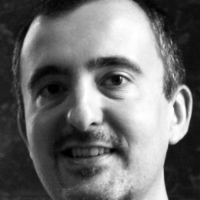Thesis Chapters by Sjoerd van Riel

Several digital technologies are now available to record and document archaeological excavations.... more Several digital technologies are now available to record and document archaeological excavations. A large number of studies have been published concerning the use of laser scanning, image based 3D modelling and GIS. By integrating different typologies of 3D data from Uppåkra, an Iron Age central place in southern Sweden, this thesis focuses on the development and evaluation of how 3D Geographic Information Systems (3D GIS) affect archaeological practice. In specific a Digital Terrain Model (DTM) was created for the site and the surrounding landscape. A UAV (drone) was used to document the excavation area in higher resolution, and image based 3D modelling was used to record the ongoing excavation on a single-context level. These different typologies of data were subsequently imported in a 3D GIS system (ArcScene) in order to conduct various types of spatial analysis (e.g. hillshade and slope analysis) as well as to create 3D drawings of the excavated contexts, using the textured 3D models as a geometrical reference. The ability to virtually revisit previous stages of the excavation and the use of tablet PC’s for documentation and discussion at the trowel’s edge increased reflexivity on the excavation and stimulated on-site interpretation by the excavation team. The model based drawing approach furthermore improved the drawing resolution compared to traditional documentation using a total station, especially for complicated contexts. This approach allowed connecting different typologies of data in the same virtual space, 1) increasing the possibility of researchers and scholars to gain a complete overview of all the information available, as well as 2) exponentially increasing the possibilities to perform new analysis. The ability to interact and navigate with all the data in 3D improved the impact of the data and comes closer to simulating the real world. Though some challenges still have to be faced, such as inaccurate georeferencing and unrealistic colour projection, the method was found to significantly improve the documentation quality by creating a multi-scale 3D documentation platform. By further developing this method, it can help us to improve the standards of archaeological excavation documentation.
Conference Presentations by Sjoerd van Riel
3D models have been used in archaeology for more than a hundred years. They allow archaeologists ... more 3D models have been used in archaeology for more than a hundred years. They allow archaeologists to virtually revisit places that are now lost. 21st century 3D models provide archaeologists with several advantages in comparison to traditional documentation.
This paper will be an introduction in modern technologies that are used to create 3D models in modern-day field archaeology, as well as the theoretical implications they have.
Papers by Sjoerd van Riel

Acta archaeologica, Jan 31, 2024
Many known factors are continuously affecting and changing the landscape. This can lead to challe... more Many known factors are continuously affecting and changing the landscape. This can lead to challenges in interpreting archaeological remains found underwater, or in areas that used to be underwater, when their depth below the water surface at the time of deposition is unknown. This article is an attempt to investigate if it is possible to reconstruct how the underwater (submarine) landscape might have looked in Oslo in the Late Middle Ages based on data gathered in an archaeological excavation at site B8a. Calculating the known parameters that affect the underwater topography in Oslo – land uplift, sea level change, subsidence of the ground, and technical adjustment of mean sea level – resulted in a model. This model of the seabed around AD 1400 is based on up-to-date information and shows that it is possible to create a relevant framework for archaeological interpretation. Yet, there are challenges like the degree of inaccuracy of the data used, where our calculations end up with an uncertainty range of around ± 0.64 m.
Digital Applications in Archaeology and Cultural Heritage, 2024
The site B8b in Oslo, Norway, measured over 10,000 cubic metres and was excavated by the Norwegia... more The site B8b in Oslo, Norway, measured over 10,000 cubic metres and was excavated by the Norwegian Maritime Museum (NMM) and the Norwegian Institute for Cultural Heritage Research (NIKU) in 2022-2023. This paper presents the workflow for the 3D reconstruction of the stratigraphic phases on NMM's part of the site. The challenges that come with 3D reconstructing a site of this size are discussed and compared to other sites where 3D stratigraphic reconstruction has been attempted. For this study, solid meshes of the stratigraphy were created in Blender, then integrated with other excavation data in ArcGIS PRO. The 3D dataset of the stratigraphy was subsequently used for analysing the inclination of the former seafloor and the relationship between the site’s stratigraphy and finds such as a late medieval boat wreck.

NMM arkeologisk rapport 2024:2, 2024
Tomt B6b inngår i gjeldende detaljregulering for Bispevika Syd (S-4826), egengodkjent av Oslo bys... more Tomt B6b inngår i gjeldende detaljregulering for Bispevika Syd (S-4826), egengodkjent av Oslo bystyre 12.11.2014. Tiltaket på tomt B6b omhandlet etablering av kjellerareal under bolig- og kulturbygg og kom i direkte konflikt med det sjøavsatte kulturlaget, Askeladden ID 115037. Frem til 1800-tallet har tomta vært dekket av vann. Et større landvinningsarbeid førte til at området ble utfylt. Siden har arealet fungert som del av byens kaianlegg. I middelalderen og frem til 1624 var området plassert like vest for hvor byen lå. Det var derfor potensial for funn av kulturminner tilhørende Oslos tidlige renessansehavn. Dette var også bekreftet av arkeologiske undersøkelser på tilliggende tomter. I løpet av undersøkelsen ble det dokumentert lag og kaifront fra landvinningen på 1800-tallet, men de mest interessante funnene var av sjøavsatte leirelag og ballastlag tilknyttet Oslos tidlige renessansehavn. Mangel på gjenstandsfunn og eldre konstruksjoner indikerer at den sørvestre avgrensningen av havna sannsynligvis er avdekket og er med å belyser aspekter ved Oslos gamle havn.

Acta Archaeologica Volume 94 (2023): Issue 1 (Jan 2024): Special Issue: Under the Waves and Ripples: Recent Developments in Marine Archaeology. Proceedings of the Nordic Conference for Maritime Archaeology IV, Roskilde 2022, edited by Morten Ravn and Mikkel Haugstrup Thomsen, 2024
Many known factors are continuously affecting and changing the landscape. This can lead to challe... more Many known factors are continuously affecting and changing the landscape. This can lead to challenges in interpreting archaeological remains found underwater, or in areas that used to be underwater, when their depth below the water surface at the time of deposition is unknown. This article is an attempt to investigate if it is possible to reconstruct how the underwater (submarine) landscape might have looked in Oslo in the Late Middle Ages based on data gathered in an archaeological excavation at site B8a. Calculating the known parameters that affect the underwater topography in Oslo – land uplift, sea level change, subsidence of the ground, and technical adjustment of mean sea level – resulted in a model. This model of the seabed around AD 1400 is based on up-to-date information and shows that it is possible to create a relevant framework for archaeological interpretation. Yet, there are challenges like the degree of inaccuracy of the data used, where our calculations end up with an uncertainty range of around ± 0.64 m.
Aftenposten Historie Nr. 12, 2020
Lund Archaeological Review 23 , 2019
Hair combs of bone and antler were commonly used personal items during the Viking Age (AD 800-100... more Hair combs of bone and antler were commonly used personal items during the Viking Age (AD 800-1000). However, many specifics regarding their production and distribution are still unclear, and the discussion of local production or itinerancy has not been closed. In this paper, I argue that a combination of raw material analysis and emperical study of
decoration can lead to new insights regarding local fashions and regional manufacturing. As a case study, an empirical analysis of comb material from three major Viking Age central places (York, Dorestad and Birka) is presented. The study suggests that although many decoration types occur on combs from all three sites, regional patterns can be distinguished that can be interpreted as indicators for local fashions as well as for itenerant comb makers.
While in continental Europe ‘proto urban settlements’ already existed for hundreds of years as a ... more While in continental Europe ‘proto urban settlements’ already existed for hundreds of years as a legacy of the Roman Empire, in the remote are of Scandinavia proto-urbanism only started in the period that is known as the Viking Age. The reasons for Scandinavian towns to suddenly arise in a relatively short period of time has been the subject of scholarly debate for many years and is part of a bigger discussion concerning the so called ‘emporia’, as which the sites connected to craft and long-distance trade in early medieval northern Europe are known since Richard Hodges’ book “Dark Age Economics”. In this article I will firstly discuss the debate concerning the origin of ‘urban’ settlements in Scandinavia, and secondly a couple of examples of Viking Age towns.











Uploads
Thesis Chapters by Sjoerd van Riel
Conference Presentations by Sjoerd van Riel
This paper will be an introduction in modern technologies that are used to create 3D models in modern-day field archaeology, as well as the theoretical implications they have.
Papers by Sjoerd van Riel
decoration can lead to new insights regarding local fashions and regional manufacturing. As a case study, an empirical analysis of comb material from three major Viking Age central places (York, Dorestad and Birka) is presented. The study suggests that although many decoration types occur on combs from all three sites, regional patterns can be distinguished that can be interpreted as indicators for local fashions as well as for itenerant comb makers.
This paper will be an introduction in modern technologies that are used to create 3D models in modern-day field archaeology, as well as the theoretical implications they have.
decoration can lead to new insights regarding local fashions and regional manufacturing. As a case study, an empirical analysis of comb material from three major Viking Age central places (York, Dorestad and Birka) is presented. The study suggests that although many decoration types occur on combs from all three sites, regional patterns can be distinguished that can be interpreted as indicators for local fashions as well as for itenerant comb makers.